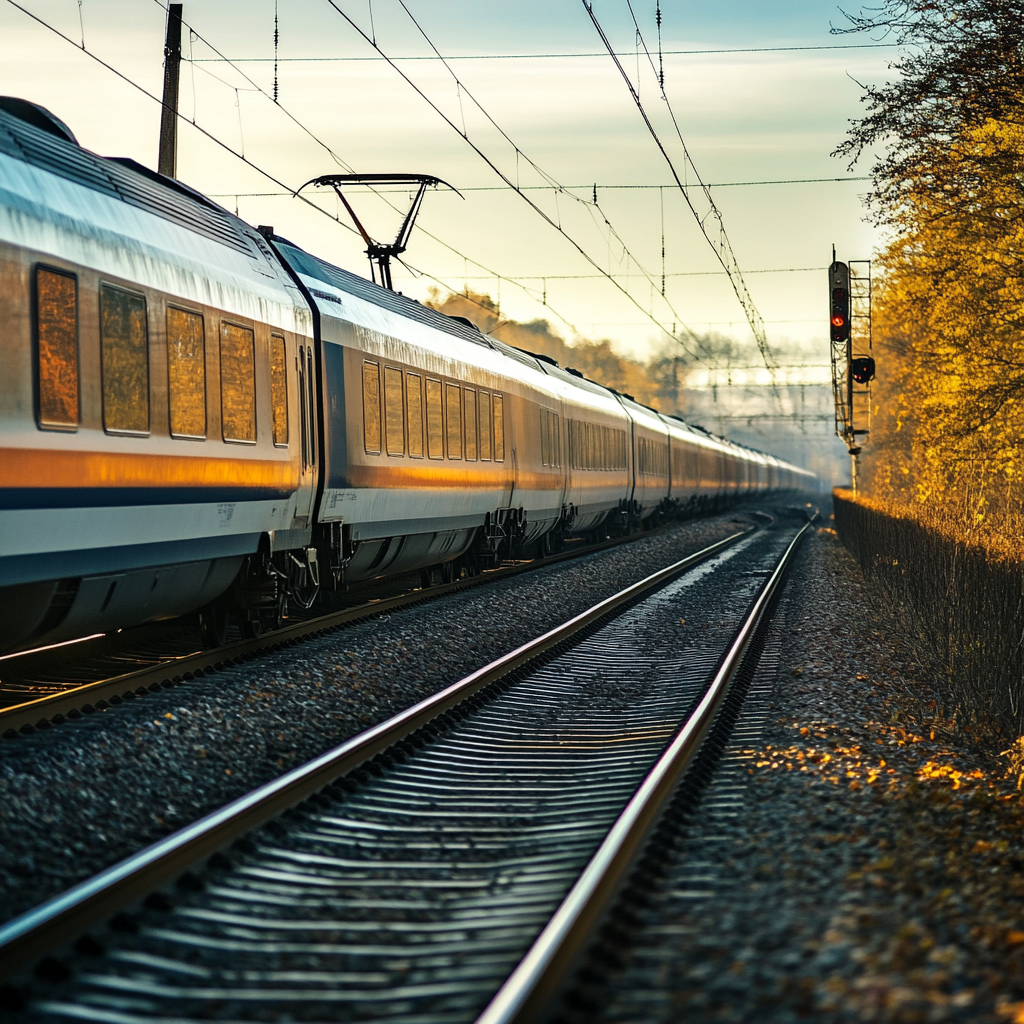It is impossible to imagine the modern world without fast, technologically advanced transport that can reduce distances and time to a minimum.Railway, despite its impressive age, remains one of the key elements of transportation on a national and continental scale. Its development is not just a history of train traffic, but a profound reflection the entire course of civilization, its quest for speed, efficiency and comfort. From the first steam locomotives to today’s magnetically levitated trains, technology has continually changed the nature and rhythm of travel.
Speed Technologies from Coal to Diesel
History of railway traffic– it is first and foremost historyacceleration. At first, thanks to mechanical progress: from steam locomotives to diesel and electric locomotives, from heavy carriages to light aluminum trains. Already at this stage, it became clear: man wants to go faster.The ability to cover hundreds of kilometers in a matter of hoursbecame an important factor in the development of industry, trade and social mobility.
With the advent of high-speed railways,such as JapaneseShinkansen, French TGVand ChineseCRH, rail traffic has turned intohigh-tech process, and not just moving on wheels. The advent of magnetic levitation trains, likeMaglev, was a landmark milestone: trains are now able to move without physical contact with the rails, which reduces friction and allows them to reach record speeds.This is not just a means of transport, it is an engineering marvel., which has become part of everyday life. And at the same time, the beginning of a new reality, in which travel time tends to zero, and distances become almost conventional.
Infrastructure of the future in reality today
The transition to a high-tech railway system is impossible without high-quality, well-thought-out andflexible infrastructure. It includes not only the rails themselves, but also a multitude ofdigital and mechanical systems, ensuring safety, accuracy, efficiency.
Here are the key elements of modern railway infrastructure:
- Intelligent Traffic Management Systems: allow you to coordinate your schedule in real time, avoid delays and improve overall safety.
- Automated stations and platforms: implementation of turnstiles with biometrics, digital navigation, contactless payments.
- Cloud technologies for logistics: management of cargo flows and schedules through a single platform.
- Modernized routes and crossings: use of wear-resistant materials, motion sensors and temperature modules.
- Emergency communication and monitoring systems: ensure control over the condition of the composition and immediate response in emergency situations.
All these elements become part of a single ecosystem., where the train is just the finishing touch, and the real magic happens in the digital and logistical space.
Comfort and rhythm of everyday life of the passenger
The modern passenger— not just a traveler, but a participantflexible and comfortable system, where every stage of the trip is thought out to the smallest detail. Charging devices, adjustable seats, adaptive lighting and high-quality Internet becameintegral parts of everyday comfort. This is not a luxury, but a new norm. The rhythm of life is changing, and travel should match this speed – without stress and overload.
Mobile apps allow you to choose your seat in advance, find out about transfers, order food and track your route. Support at all stages – from buying a ticket to getting to the right platform – is provided bya sense of stability and predictability. Even the visual style of modern trains and stations is changing: more glass, light, space and green solutions. All this is part of a global trend to makethe trip as pleasant, functional and natural as possible for a 21st century person.
City and platform for accelerating life
Technologies Speeds they change not only the railways, but also the cities around them.Station areas, logistics, route network within populated areas— everything begins to adapt to the pace set by high-speed trains. Stations become not just arrival and departure stations, buttransport and commercial hubs, integrated into the urban fabric. Where there used to be dead ends, growth points are now appearing.
The integration of rail infrastructure into public transport and urban planning leads toexpansion of business activity, improved mobility and even redistribution of the populationPeople increasingly live outside of megacities, but work in them – thanks to high-speed trains.Cities are getting closer to each other, and the boundaries between them are erased. This is the real revolution of everyday life, caused by the acceleration on the line.
Resistance and acceptance of the human psyche
However, not everything is measured in kilometers per hour.Acceleration of life, caused by technological progress, sometimes causes internal protest. A person does not always keep up with the rhythm of machines. The desire for efficiency can lead topsychological overload, a sense of the route’s meaninglessness, and a loss of orientation in space. It is necessary not only to go faster, but alsounderstand where you are going and why.
This is why in recent years there has been increasing attention tobalance between technology and mental comfort. Silent zones, soft colors, noise and vibration reduction systems appear in train design. The importance ofemotional intelligence in approaching the passenger. Progress is not only about speed, but also aboutthe ability to maintain humanity in the face of acceleration.
We live in an era when moving between cities and regions is no longer something labor-intensive and time-consuming.Rail transport, which absorbedall the latest achievements in engineering and digital solutions, becomesa true symbol of accelerating reality. But along with this, there is a need to reconsider the very understanding of travel. It is no longer just physical movement, butexperience that reflects the state of society and its values.
Speed is a blessing when combined with quality. Technology can free us from routine, but it should not take away from us.impressions, awareness, sense of the path. Let the train rush at 300 kilometers per hour, but in the carriage we still remain people – with desires, experiences, fatigue and the joy of meeting. This is the task of the new railway era:combine technical excellence with human warmth, and speed – with attention to detail.
It promotes the growth of agglomerations, simplifies movement between work and residential areas, makes remote employment possible, stimulates economic development in remote areas and increases population mobility.
The main risks arepsychological fatigue of passengers, a decrease in the quality of route perception, loss of connections between stops, andincreasing cost of servicing high-tech systems, which may limit accessibility to the public.

